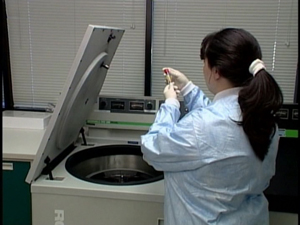What Should We Do?
What's the difference between RCF and RPM?
by Dennis Ernst • June 07, 2019

Dear Center for Phlebotomy Education:
Is there a CLSI document that sets the requirement for clinical labs.? If not, is there any other source that you recommend? We are running in to mixed information about the RPMs and RCFs that need to be set for our centrifuges. What should we do?
My response:
CLSI document GP44-A4 (Procedures for the Handling and Processing of Blood Specimens for Common Laboratory Tests) contains some information on centrifugation, specifically RPM (revolutions per minute) and RCF( relative centrifugal force). It was published in 2010 and is currently under revision. But there are two other sources of important information you also need to look at. One is the Instructions for Use (IFU) from the manufacturer of the tubes you use. They set the RCF required for their tubes based on their own data. Once you know the RCF the tubes must be subjected to, then you need to consult with the IFU from the manufacturers of the centrifuges you have in use. They will tell you the RPMs necessary to meet the tube manufacturer's recommended RCF.
Every model of centrifuge will require a different RPM to attain the recommended RCF. That's because the RCF is dependent upon the distance from the centrifuge's rotor to the bottom of the tube as it spins. Tube manufacturers have no idea what centrifuges their tubes will be spun in, so the lab must make the RPM calculation. CLSI puts an RCF nomograph in GP44 to help, but you still need to know the RCF the tube manufacturer recommends for each tube type.
[Editor's Note: The Center for Phlebotomy Education posted a Tip of the Month a while back that provides more information on sample handling. View Specimen Handling: Fact or Fiction?]
Related Posts and Information
overall rating: my rating: log in to rate
YouTube centrifuge g-force processing RCF relative centrifugal force revolutions per minute RPM sample
